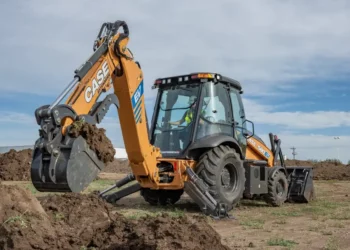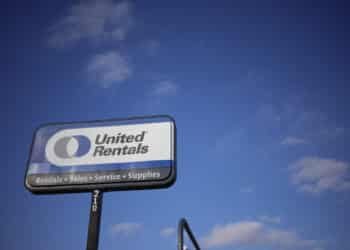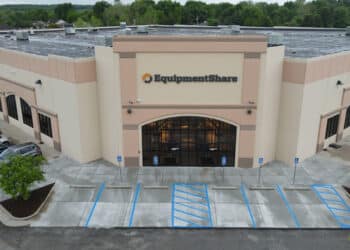Taycor Financial, LiuGong launch rental partnership
ARA projects 3.9% revenue increase to $80.9B in 2025
Taycor Financial and Chinese construction equipment manufacturer LiuGong are launching an equipment rental program designed to help dealers and rental houses expand their offerings with less risk and complexity.
The program provides dedicated credit lines, interest-only, rent-to-sell options, and OEM-subsidized financing to give LiuGong dealers more flexibility and a pathway to convert rentals into sales, Vu Nguyen, senior vice president of business development at Taycor Financial, told Equipment Finance News.
“Now you’re free to put that equipment out there to rent and do whatever you need to do to get the customer to be more ‘customary’ to this new brand, so that they’re more comfortable buying this equipment at a later point,” he said. “Unlike the flooring line, which is revolving, this will be an installment loan for every package loan that you do with us.”
The initiative aims to strengthen dealer profitability, grow rental fleets and increase customer access to LiuGong construction equipment, according to a Taycor Financial release today.
“This rental program has been customized especially to meet the needs of LiuGong dealers so they can grow the rental business profitability and get more high-quality LiuGong machines in the hands of customers.” Joseph Andris, vice president of dealer administration and finance at LiuGong, said in the release.
LiuGong represented the 19th-largest global construction equipment OEM and the fourth-largest Chinese OEM, behind XCMG, Sany and Zoomlion, in 2024, with $4.2 billion in construction equipment sales, according to the 2025 Yellow Table published by international construction information firm KHL Group.
Developing the rental program
Equipment lender Taycor Financial began creating a rental program after dealer feedback at a manufacturer summit highlighted the need for a way to trial new equipment without committing to large purchases, Taycor’s Nguyen said. The program allows dealers to pay off a unit early if a renter decides to purchase it, clears the dealer’s flooring line balance for that unit and shifts the asset to the rental side.
Differing agendas for inventory financing and floor plan lenders is a challenge for dealers trying to rent out floor plan-financed machines, Nguyen said.
“If I’m a flooring lender, I’m financing you on that inventory, and I want my inventory to be new until it’s sold.” — Vu Nguyen, senior vice president of business development, Taycor Financial
“If you’re going to rent it out, God knows what’s going to happen to it, how your renter is going to treat my equipment,” he said.
The rental program also enables Taycor to strengthen its relationships with dealers, OEMs and customers, key to success during challenging market conditions, he added.
“That also helps you as the dealer to be able to continue to build that rapport, that relationship, with your customer,” he said. “At the same time, we’re helping the manufacturer to also build rapport and relationships with the dealer, so we saw that as a win-win.”
Rental market growing despite market conditions
The American Rental Association (ARA) now forecasts slower growth for the U.S. equipment rental industry in 2025, projecting a 3.9% revenue increase to $80.9 billion, according to an Aug. 8 ARA release. By segment, construction and industrial rental revenue is expected to reach $63.8 billion, while general tool rental revenue is projected at $17.1 billion.
In fact, Canadian Caterpillar dealers Finning and Toromont reported increased rental revenue during their recent second-quarter earnings calls.
Still, growth is expected to soften in 2026, with a 2.9% increase projected, according to ARA.
Taycor Financial hopes to add finance market share with the program’s focus on a differentiated product that stands out in the marketplace and attracts customers directly, with the lender continuing to fine-tune the program as it expands, Nguyen said.
“If we come up with that product and we figure out a way to mitigate our risk, we can scale strategically, grow strategically and get to our goal at the same time,” he said. “We think we have figured out about 80% of it. I’m sure more things will come up as we do more, and then we’ll just have to take it one step at a time.”
Check out our exclusive industry data here.









